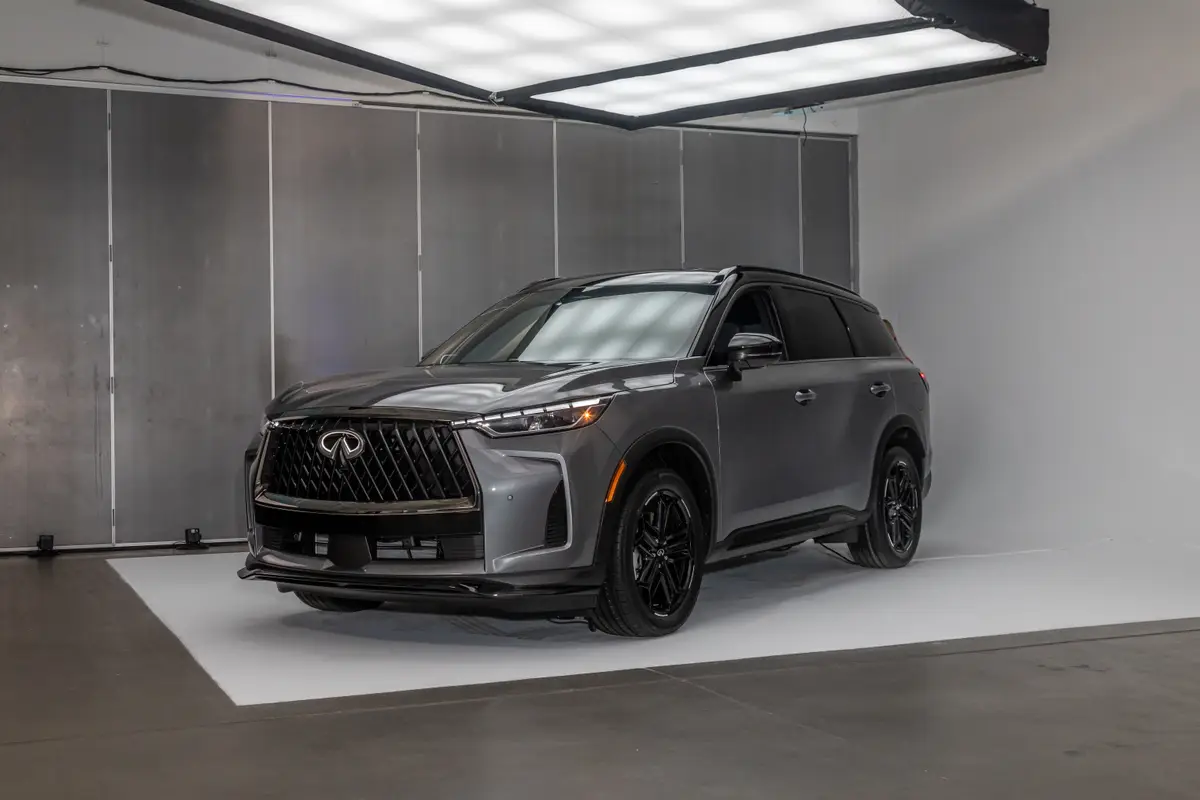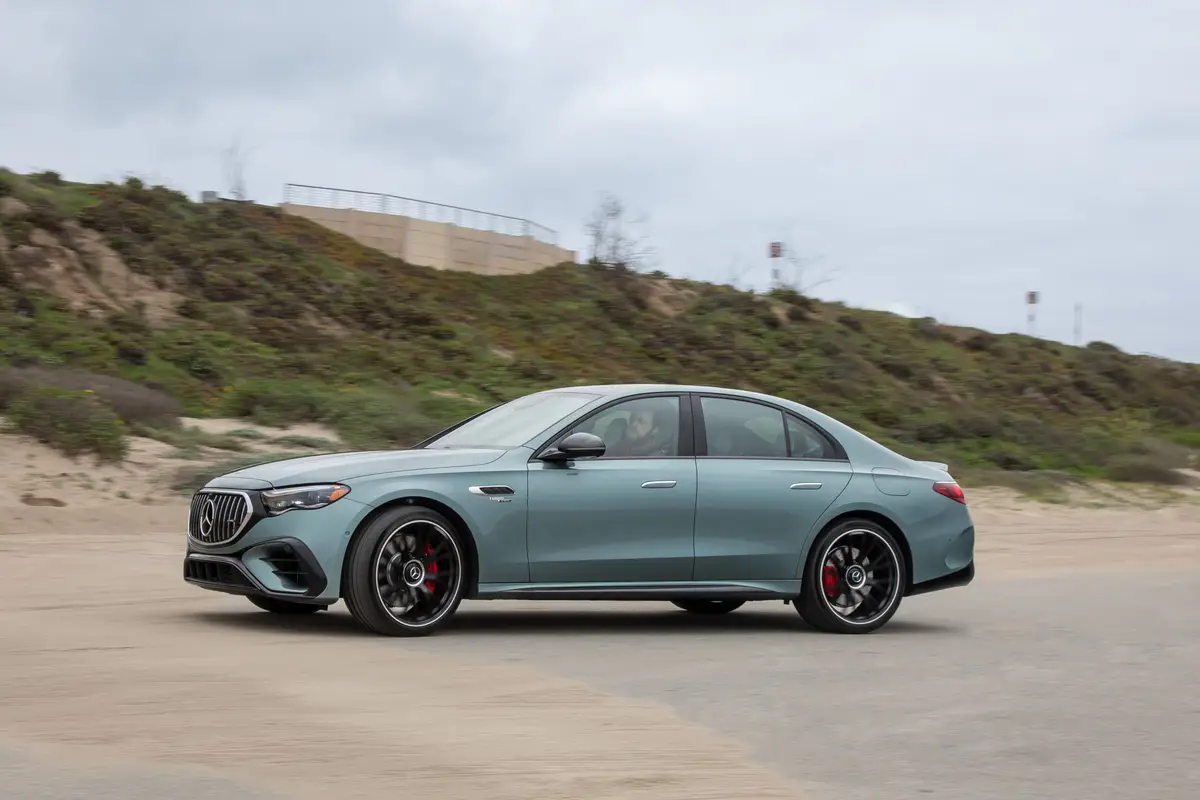The Detroit News's view
If you’re in the market for a small sporty coupe, the 1997 Hyundai Tiburon may be missing from your shopping list, and not just because it’s a brand-new model.
That doesn’t surprise us.
The Korean automaker has suffered from some of the worst image problems of any manufacturer in recent history, in large part because the first cars it sold here in the ’80s were of such dubious quality. Despite having introduced a flurry of fresh products in the past two years and charting major gains in the respected J.D. Power Initial Quality Survey, Hyundai has yet to regain fully its early momentum, and still seems to attract more than its share of entry-level buyers who think they can’t afford to shop elsewhere.
Can we recommend the Tiburon to the person who doesn’t have bargain-basement expectations? The quick answer is yes – with reservations.
She: Darlene drops off a lot of our test cars and when she brought the Tiburon over she squealed with delight. “This is your car,” she said to me. “It’s so cute and when you sit in the driver’s seat it fits your butt perfectly!”
He: She must have a really small butt. Or am I supposed to say that?
She: I’m sure she’ll love you for that. But to tell you the truth, I was disappointed when I got behind the wheel and it had nothing to do with my derriere. The windshield glass had a bit of a distortion that was right at my eye level and it was annoying. It made me feel slightly queasy to look through it. And it made me question the overall quality of the Tiburon.
He: I didn’t really notice a problem.
She: That’s because you’re a foot taller than I am. Of course, you didn’t notice it.
He: In fact, that’s the problem with the Tiburon, as far as I’m concerned. It’s too small for me. Or else I’m too big for it. I just had a hard time getting comfortable. The seat didn’t quite fit my rear end, my head was brushing the ceiling and my elbows felt like they were right out to there. Frankly, I think this is a car that’s designed to appeal more to women, and I don’t mean big women either. And before you jump to conclusions, I need to point out some of the strong points on the up-level Tiburon FX that we drove. It has the peppy twin-cam two-liter engine, which makes 140 horsepower and is really responsive. The car itself is delightfully nimble and easy to toss around without ever seeming to lose its poise. I just don’t fit in the darn thing.
She: I fit in it, but I’m not sure what kind of image I’m projecting. Who knows what a Tiburon is? When I left the headlights on and ran down the battery, even the AAA dispatcher I called to get a jump had no idea what kind of car I was talking about. You tell me that Tiburon means “shark” but that sounds so masculine and aggressive.
He: Not if you’ve seen some of the women drivers I have lately. Tiburon is also the name of a hip little village near San Francisco where I dined with some of the Hyundai fol ks. You know something funny? The Tiburon’s crisp exterior styling is so trendy, it seemed to fit right into that town.
She: If you haven’t ever seen a Tiburon, picture an Eagle Talon with even more of a sculpted look. But the Tiburon is not a bargain-basement Talon, at least sticker-wise. You’ll pay nearly $18,000 for the version we drove, and that doesn’t include antilock brakes, which are an extra-cost option. Nor is that a heck of a lot cheaper than most of the competitors in the sporty coupe class.
He: I almost fell over when we found out that it costs over $1,300 a year to insure the Tiburon, partly because it’s harder to get parts and the replacement costs are higher than most vehicles, according to AAA. If you’re a bargain hunter, you’d be better off with a Chevy Cavalier, where you could probably wangle more equipment at a lower price, not to mention a lower insurance payment.
She: But look at all the standard equipment you get on a Tiburon, especially th model. I was really grateful for the standard rear windshield wiper on frosty mornings, the power accessories and the six-way adjustable driver’s seat. Nice touches. It makes you feel like you’re getting something for your money besides a good-looking car.
He: OK, so the styling is fresh and distinctive, the engine is zippy, the car is fun to drive and it has lots of standard features. Guess what? I just described about half a dozen vehicles in the sporty compact segment. What I’m trying to say is, as good as the Tiburon may be, there doesn’t really seem to be a compelling reason to buy it over any of its competitors in the class. If I were spending 18 grand, my choice would probably be the Talon or perhaps the Saturn SC1, which has just been redesigned for ’97.
She: It’s pretty hard to be lukewarm about a car that would like you to think of it as a shark among sporty coupes. But that’s what we are.
He: What? Lukewarm sharks?
1997 Hyundai Tiburon FX
Type: Front-engine, front-wheel drive, four-passenger sport coupe.
Price: Base, $14,899; as tested, $17,914 (inc. $415 destination charge).
What’s new for ’97: All-new model for ’97.
Standard equipment: Power steering, all-independent sport suspension, power four-wheel disc brakes, Michelin 195/60HR14 radial tires, cast alloy wheels, projector beam headlamps, fog lamps, rear spoiler, power windows, power mirrors, power door locks, tinted glass, intermittent wipers, rear wiper/washer, rear defroster, AM-FM stereo cassette, digital clock, six-way adjustable driver’s seat, 50/50 split folding rear bench seat, center console with cup holder, tilt steering column.
Safety features: Dual air bags.
Options on test vehicle: Package 08, inc. air conditioning, cruise control, power sunroof and CD player ($2,425); floor mats ($75).
EPA fuel economy: 22 mpg city/29 mpg highway.
Engine: 2.0-liter I-4; 140-hp at 6000 rpm; 133 lb-ft torque at 4800 rpm.
Transmission: Five-speed manual.
Competitors: Eagle Talon, Mitsubishi Eclipse, Toyota Paseo, Nissan 200SX, Honda del Sol, Chevrolet Cavalier, Pontiac Sunfire, Dodge/Plymouth Neon Sport, Dodge Avenger, Saturn SC1.
Specifications: Wheelbase, 97.4 inches; overall length, 170.9 inches; curb weight, 2597 pounds; leg room, 43.1 inches front/29.9 inches rear; head room, 38.0 inches front/34.4 inches rear; shoulder room, 53.5 inches front/49.2 inches rear.
12-month insurance cost, according to AAA Michigan*: $1,307. Rates based on an average family of four from the Livonia area whose primary driver is aged 40 with no tickets who drives 3-10 miles each way to work. Rates reflect multicar discount and, where appropriate, discounts for air bags and seat belts.
Where built: Ulsan, Korea.
Latest news



